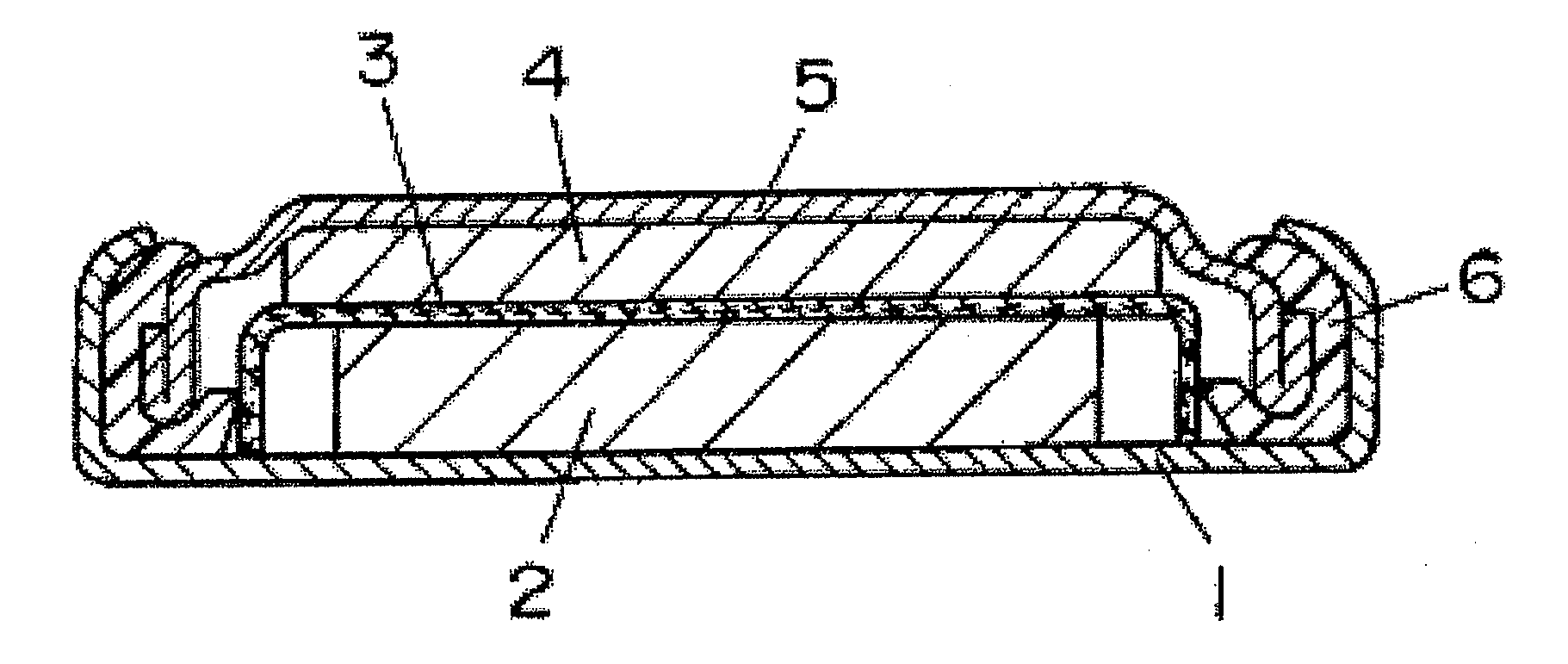Positive electrode active material for lithium primary cell
- Summary
- Abstract
- Description
- Claims
- Application Information
AI Technical Summary
Benefits of technology
Problems solved by technology
Method used
Image
Examples
examples
[0040]Hereinafter, the present invention will be described in more detail based on the examples which, however, are not intended to limit the scope of the present invention.
[0041]The fluorine content was measured by the following method.
(Measurement of Fluorine Content)
[0042]A powdery sample of a fluorinated carbon material is decomposed by heating at 1200° C. with an automatic burner (AQF-100 produced by Mitsubishi Chemical Corporation) such that the generated gas is absorbed by a predetermined amount of a hydrogen peroxide solution. The ion concentration of the fluoride in the obtained absorbing solution (measurement sample) is quantified by ion chromatography with ICS-1500 produced by Nippon Dionex K.K. The mass ratio of the fluorine atoms and the carbon atoms in the fluorinated carbon material is determined based on the fluorine content in the measurement sample ('absorbing solution) and the amount of the fluorinated carbon material, whereby the fluorine content (% by mass) in t...
preparation 1
(Production of Fluorinated Ketjen Black)
[0043]A constant-temperature bath capable of circulating fluorine gas was charged with 1 kg of ketjen black (Ketjenblack EC600J produced by Lion Corporation), and the ketjen black was allowed to react with fluorine gas for 12 hours under the conditions of a fluorine gas pressure of 0.5 atm (5.07×104 Pa) and a heating temperature of 400° C. Thereby, fluorinated ketjen black (hereinafter referred to as FKB) having a fluorine content of 61.0% by mass was produced.
[0044]An amount of 1 g of the obtained fluorinated ketjen black FKB was mixed into 20 g of γ-butyrolactone, and the mixture was left to stand at 100° C. for one week. Thereafter, the fluorinated ketjen black was removed by filtration, and the concentration of the free hydrofluoric acid in the filtrate was measured by an F ion meter (F ion meter F-5F produced by TGK). The measured concentration was 0.034% by mass.
(High-Temperature Treatment of Fluorinated Ketjen Black FKB)
[0045]The fluori...
preparation 2
[0046]The fluorinated ketjen black FKB having a fluorine content of 61.0% by mass produced in Preparation 1 was left to stand at 400° C. for one more hour under nitrogen stream for the high-temperature treatment, so that a high-temperature treated fluorinated ketjen black (high-temperature treated FKB-2) was obtained. The concentration of the free hydrofluoric acid of the obtained high-temperature treated FKB-2 measured as in Preparation 1 was 0.019% by mass, greatly decreased from the concentration of the free hydrofluoric acid measured before the high-temperature treatment.
PUM
 Login to View More
Login to View More Abstract
Description
Claims
Application Information
 Login to View More
Login to View More - R&D
- Intellectual Property
- Life Sciences
- Materials
- Tech Scout
- Unparalleled Data Quality
- Higher Quality Content
- 60% Fewer Hallucinations
Browse by: Latest US Patents, China's latest patents, Technical Efficacy Thesaurus, Application Domain, Technology Topic, Popular Technical Reports.
© 2025 PatSnap. All rights reserved.Legal|Privacy policy|Modern Slavery Act Transparency Statement|Sitemap|About US| Contact US: help@patsnap.com


